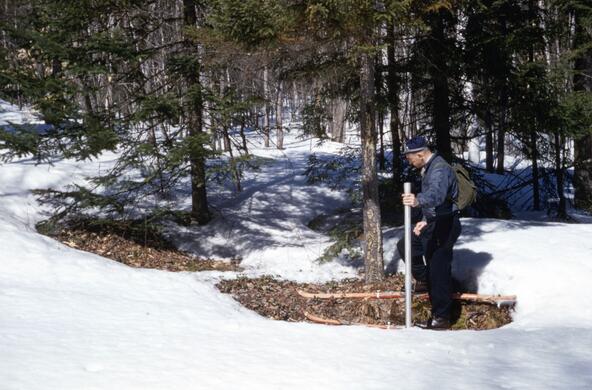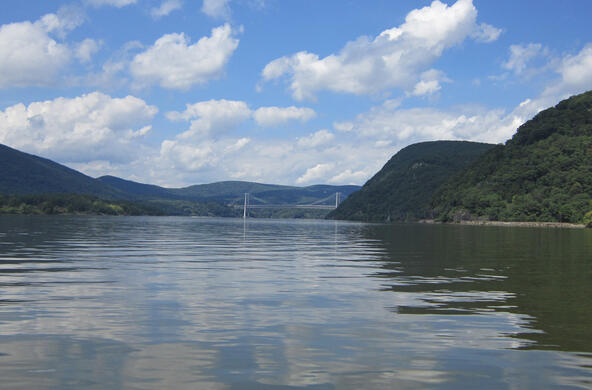Reposted from April 2016 due to current controversy about fluorine in drinking water
A few weeks ago, I read an article describing outrage among a group of citizens over fluoridation of their local drinking water. What’s behind this issue?
First, we must engage in a little biogeochemistry—in this case, how human physiology is affected by environmental chemistry. Teeth and bones are largely constructed of a calcium-based mineral known as apatite. It comes in several forms. The nominal form is known as hydroxyapatite, which contains a hydroxyl group (-OH) on the periphery of its chemical structure. An alternative form is known as fluoroapatite, in which the hydroxyl group is replaced by the fluorine (F). Fluoroapatite is more resistant to chemical breakdown than hydroxapatite. It makes better bones.
Fluorine is found naturally in the environment, especially in areas of volcanic activity and volcanic soils. It is released as an air pollutant during the combustion of coal and the refining of aluminum and as a contaminant of water from the production of phosphate fertilizer.
Most drinking waters contain only a small amount of fluorine (<0.5 milligrams per liter or mg/l), and seawater contains about 1.3 mg/l of it. When it was discovered in the 1930s that adding a small amount of fluorine to drinking water made teeth more resistant to decay, the practice caught on widely across America, especially following World War II. Tooth decay rates in children dropped dramatically, and the process was widely regarded as a milestone in the improvement of human health. Although some recent studies have questioned the link between fluoride and better dental health, the advent of fluoridated water would seem to be a good example of better living through biogeochemistry.
Fluoridated drinking water generally contains about 1.0 mg/l of fluorine. Fluorine is one of those substances where a little bit is good for you, but too much is harmful. EPA standards limit F in drinking water to <4 mg/l. Fluorine above about 10 mg/l causes a darkening of the teeth, which can only be considered unattractive. In some areas of northern Tanzania, fluorine is naturally found at levels of 20 mg/l, with adverse effects.
In the U.S., there are a few regions where high fluorine levels occur naturally, and where it is best not to additional fluorine to drinking water. Fluorine is also found at high concentrations in tea. Many countries in Europe have ceased to add fluorine to drinking water, following the precautionary principle. But, overall, most complaints about fluoridation of drinking water are not based on health risks, but on the government inserting itself into the lives of citizens for their well-being. Should we tolerate a government entity deciding whether or not we have fluoridated water, mandatory measles vaccinations, and requiring helmets for motorcycle riders? Fortunately, a shift to fluoridated toothpastes allows consumers to choose whether or not they want additional fluorine in their diet.
Chlorine is widely used to disinfect drinking water, but it can lead to the formation of chloroform and other carcinogens in such waters. As an alternative to chlorine, some municipalities add chloramines to sterilize water. Cloroamines can leach the lead from older plumbing, increasing the potential for lead poisoning. I suppose we could hear outcry about using various chlorine compounds to remove bacteria from drinking water. But, somehow I never seem to hear that.
References
Barth, T.F.W. 1947. On the geochemical cycle of fluorine. Journal of Geology 55: 420-26
Carpenter, R. 1969. Factors controlling marine geochemistry of fluorine. Geochimica et Cosmochimca Acta 33: 1153-1157
DeAngelis, M., and M. Legrand. 1994. Origins and variations of fluoride in Greenland precipitation. Journal of Geophysical Research-Atmospheres 66: 1157-1172
Eichler, A., M. Schwikowski and H.W. Gaggeler. 2000. An alpine ice-core record of anthropogenic HF and HCl emissions. Geophysical Research Letters 27: 3225-3228
Lucas, J. 1988. Fluorine in the natural environment. Journal of Fluorine Chemistry 41: 1-8.
Prystupa, J. 2011. Fluorine: A current literature review. Toxicology Mechanisms and Methods 21: 103-170.
Rango, T., A. Vengosh, M. Jeuland, R.Tekle-Haimanot, E.Weinthal, J. Kravchenko, C. Paul, P. McCornick. 2014. Fluoride exposure from groundwater as reflected by urinary fluoride and children’s dental fluorosis in the Main Ethiopian Rift Valley. Science of the Total Environment 496: 188-197.







